
Patricia Highsmith was an American novelist and short story writer widely known for her psychological thrillers, including her series of five novels featuring the character Tom Ripley. She wrote 22 novels and numerous short stories throughout her career spanning nearly five decades, and her work has led to more than two dozen film adaptations. Her writing derived influence from existentialist literature, and questioned notions of identity and popular morality. She was dubbed "the poet of apprehension" by novelist Graham Greene.

Mercè Rodoreda i Gurguí was a Spanish novelist, who wrote in Catalan.
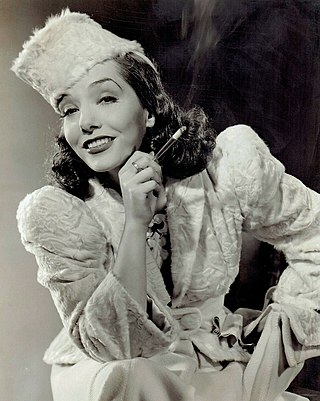
María Guadalupe Villalobos Vélez, known professionally as Lupe Vélez, was a Mexican actress, singer, and dancer during the Golden Age of Hollywood cinema.

Joan Didion was an American writer and journalist. She is considered one of the pioneers of New Journalism along with Gay Talese, Hunter S. Thompson, and Tom Wolfe.
John Gregory Dunne was an American writer. He began his career as a journalist for Time magazine before expanding into writing criticism, essays, novels, and screenplays. He often collaborated with his wife, Joan Didion.

Judith Eva Barsi was an American child actress. She began her career in television, making appearances in commercials and television series, as well as the 1987 film Jaws: The Revenge. She also provided the voices of Ducky in The Land Before Time and Anne-Marie in All Dogs Go to Heaven, both released after her death. She and her mother, Maria, were killed in July 1988 in a double murder–suicide committed in their home by her father, József Barsi.

The Young Philadelphians is a 1959 American legal drama film directed by Vincent Sherman and starring Paul Newman, Barbara Rush, Robert Vaughn and Alexis Smith. The film is based on the 1956 novel The Philadelphian, by Richard P. Powell.
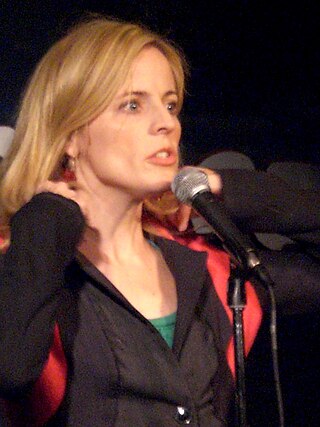
Maria Bamford is an American actress and stand-up comedian. Her work often uses self-deprecating and dark topics, including her dysfunctional family, depression, anxiety, suicide, and mental illness.

The Hours is a 2002 psychological drama film directed by Stephen Daldry and starring Meryl Streep, Julianne Moore, and Nicole Kidman. Supporting roles are played by Ed Harris, John C. Reilly, Stephen Dillane, Jeff Daniels, Miranda Richardson, Allison Janney, Toni Collette, Claire Danes, and Eileen Atkins. The screenplay by David Hare is based on Michael Cunningham's 1999 Pulitzer Prize-winning novel of the same name.
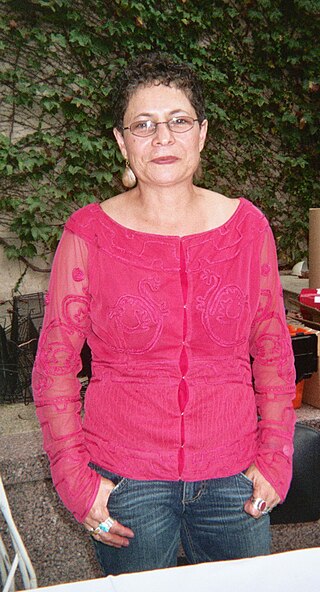
Helena Maria Viramontes is an American fiction writer and professor of English. She is known for her two novels, Under the Feet of Jesus and Their Dogs Came With Them, and is considered one of the most significant figures in the early canon of Chicano literature. Viramontes is currently the Goldwin Smith Professor of English at Cornell University.
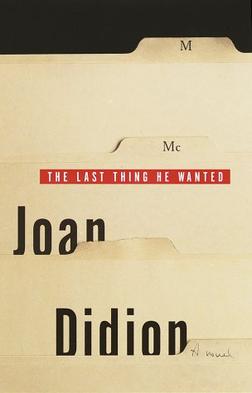
The Last Thing He Wanted is a novel by Joan Didion. It was published by Alfred A. Knopf in 1996. The story centers on Elena McMahon, a reporter for The Washington Post who quits her job covering the 1984 United States presidential election to care for her father after her mother's death. In an unusual turn of events, she inherits his position as an arms dealer for the U.S. Government in Central America. In this sparsely written, quick-paced narrative, Elena struggles to cope with the spies, American military personnel, and the consequences of her father's errors that are waiting for her on a small island in the Lesser Antilles.
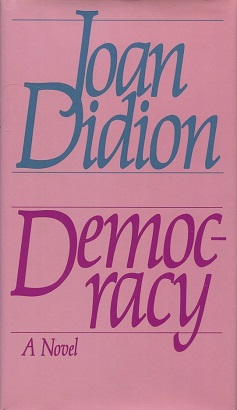
Democracy is a 1984 novel by the American author Joan Didion. Set in Hawaii and Southeast Asia at the end of the Vietnam War, the book tells the story of Inez Victor, wife of U.S. Senator and one-time presidential hopeful Harry Victor, and her enduring romance with Jack Lovett, a CIA agent/war profiteer whom Inez first met as a teenager living in Hawaii.

Joan Cooper, known by her pen name, J. California Cooper, was an American playwright and author. She wrote 17 plays and was named Black Playwright of the Year in 1978 for her play Strangers. Cooper also received an American Book Award in 1989, a James Baldwin Writing Award (1988), and a Literary Lion Award (1988) from the American Library Association.

Yiyun Li is a Chinese-born writer and professor in the United States. Her short stories and novels have won several awards, including the PEN/Hemingway Award and Guardian First Book Award for A Thousand Years of Good Prayers, the 2020 PEN/Jean Stein Book Award for Where Reasons End, and the 2023 PEN/Faulkner Award for Fiction for The Book of Goose. She is an editor of the Brooklyn-based literary magazine A Public Space.
Sara Davidson is an American journalist, novelist, and screenwriter. She is the author of the best-selling Loose Change. It was adapted as a television mini-series. In addition, she has written other series and served as producer.

Return to Peyton Place is a 1961 American drama film in color by De Luxe and CinemaScope, produced by Jerry Wald, directed by José Ferrer, and starring Carol Lynley, Tuesday Weld, Jeff Chandler, Eleanor Parker, Mary Astor, and Robert Sterling. The screenplay by Ronald Alexander is based on the 1959 novel Return to Peyton Place by Grace Metalious. The film was distributed by 20th Century Fox and is a sequel to their earlier film Peyton Place (1957).

Play It as It Lays is a 1972 American drama film directed by Frank Perry from a screenplay by Joan Didion and John Gregory Dunne, based on the 1970 novel of the same name by Didion. The film stars Tuesday Weld and Anthony Perkins, who previously starred together in the 1968 film Pretty Poison.
Joan Kahn was a New York City-based American author, anthologist, and editor, widely regarded as the preeminent mystery/suspense editor of her time. Described variously as the "doyenne of suspense," "the doyenne of mystery editors," and "publishing's grande dame of detective stories," Kahn first came to prominence during her extended reign (1946-1980) at Harper & Brothers, much of it spent creating and overseeing the longstanding "Harper Novel of Suspense" series. The Joan Kahn imprint, instituted during her Harper tenure, soon became a sought-after imprimatur for mystery connoisseurs. Some of Kahn's more celebrated signings include John Creasey, Patricia Highsmith, Julian Symons, Dick Francis, and Tony Hillerman.
Joan Didion: The Center Will Not Hold is a 2017 documentary film about Joan Didion and her work.
Merritt Tierce is an American short story author, story editor, essayist, activist, and novelist. Tierce was born in Texas and attended the Iowa Writers' Workshop, receiving her MFA in Fiction in 2011. She previously taught at the University of Iowa. She was a founding board member of the Texas Equal Access Fund and previously worked as Executive Director of the TEA. She currently resides in Los Angeles and is a writer for Orange is the New Black.















